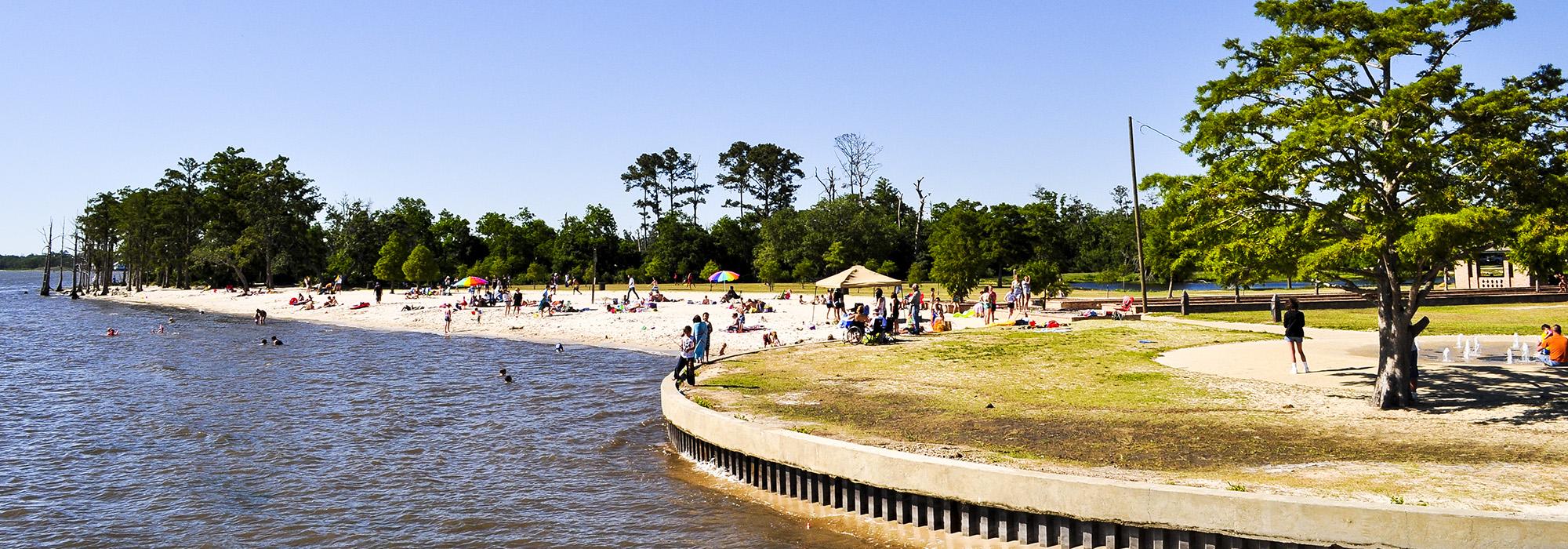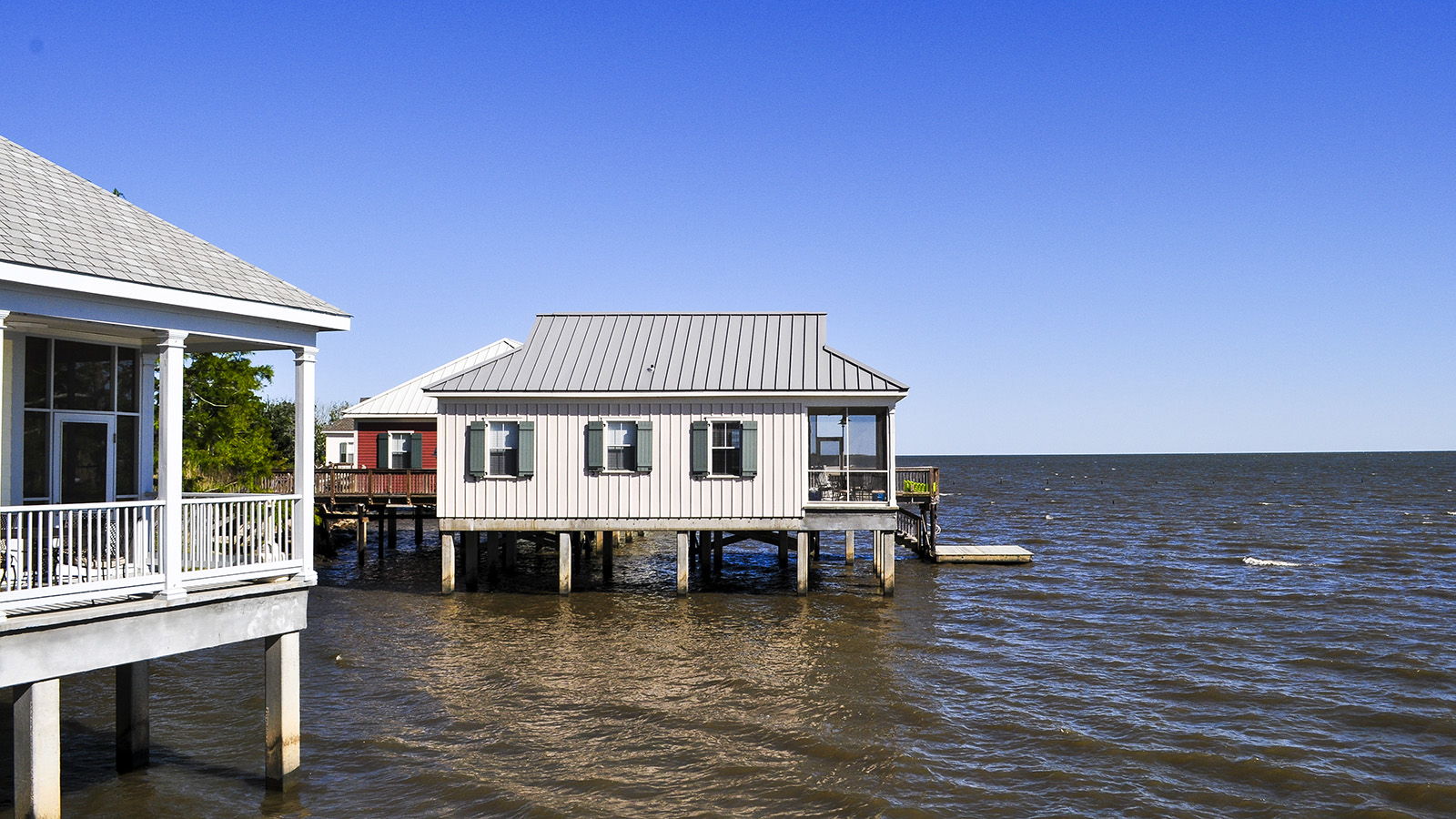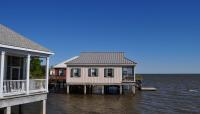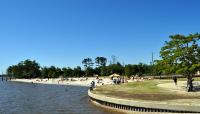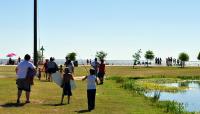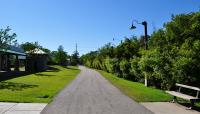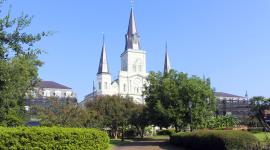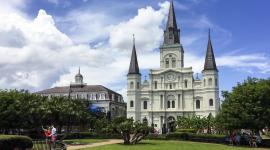Landscape Information
On the north shore of Lake Ponchartrain, this 2800-acre park encompasses the remains of a nineteenth-century plantation, Fontainebleau, named after the Parisian forest. The land was developed as a sugar plantation between 1829 and 1852 by Bernard de Marigny de Mandeville, with the foundations of a sugar mill still remaining.
The plantation was converted to a park beginning in 1938, one of Louisiana’s first state parks. Originally called Tchefuncte State Park, it opened in 1943 as Fontainebleau State Park. The State Parks Commission hired landscape architect William W. Wells to design the master plan, which was partially implemented by the Civilian Conservation Corp. The plan included group campsites, numerous Creole-influenced brick and rustic wood buildings, a beach, and a picnic area with an open-air shelter. An access road from State Highway 190, loosely influenced by a plantation road, terminates in an oval drive near the lake. Beyond the drive, park buildings face each other symmetrically across open lawn edged with wide sidewalks and planting beds. The group camps were added in 1948 further east from the park’s main center.
The park sits at the confluence of three waters and is heavily wooded with short leaf pine trees. Amenities include expanses of open lawn with live oaks, a white sandy beach with a pier, a marsh with nature trails, a visitors’ center, campgrounds and cabins, and the Tammany Trace, a trail reconstituted from a former railroad track. The park was listed in the National Register of Historic Places in 1999.



